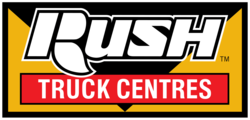Big Changes For Medium-Duty Trucks
The butcher, the baker, and yes, even the candlestick maker. Those are some of the buyers of medium-duty trucks. They aren’t truckers, they don’t know much about trucks and they may not even like trucks. But the truck to them is a tool needed for them to conduct their core business. You can add to this list the landscaper, dry cleaner, and general contractor.
They often run their trucks for a decade or more, so when it comes time to update a medium-duty truck, it’s best to consult a dealer sales rep, who has the expertise in spec’ing an appropriate vehicle for the job.
“We try to minimize any errors made when spec’ing the truck, by having trained sales staff at our dealerships. They are trained to ask certain questions and to get a thorough understanding of what the customer’s requirement is,” said Eric Smith, senior vice-president of sales and customer support for Hino Motors Canada. “Sometimes a customer may approach our dealership with an existing vehicle and they just want to have a new vehicle that follows the same spec’ as the old vehicle. That’s where problems can start. Products have changed over time, which may affect weight distribution, axle loading and that sort of thing. So don’t automatically assume the selected wheelbase that worked for a certain model of truck 10 years ago is the right application today.”
Customers who have been operating a truck for a decade or more may be surprised by the amount of exhaust aftertreatment found on a medium-duty truck today. These systems have taken frame rail space, added weight and even require additional maintenance and fluids.
“I think there is a certain element that misunderstands how it operates,” Smith said of today’s exhaust aftertreatment systems. Hino dealers address this during the delivery of the vehicle and will often involve dealer service managers in that process to ensure the end-user understands any new requirements.
A full-service lease is a nice option for buyers of medium-duty trucks who may be unfamiliar and uncomfortable with the new equipment.
“In the medium-duty market, I really think that’s the best value right now,” said Rick Kader, director, sales and marketing with International and Isuzu dealer Tallman Group. “A full-service lease takes the stress of ownership away. We worry about the maintenance. We worry about the substitution if that truck goes down. We take all that maintenance stuff away. If you buy a truck and don’t take advantage of a full-service maintenance package and you neglect maintenance, it’s going to cost you in the end.” Smith agrees.
“Everyone has their own reasons why they’re (leasing),” Smith said. “I think there’s a trend towards full-maintenance leasing, where customers just don’t want to have the responsibility for the maintenance aspect of the vehicle. They want that looked after and I think we’re seeing a shift that is continuing in that direction.”
Medium-duty truck buyers in Ontario must also consider whether or not they’ll require a commercial vehicle operator’s registration (CVOR) certificate. This is required for commercial vehicles with a gross vehicle weight rating of greater than 4,500 kgs.
Steve Kljajic, truck sales manager with GMC and Isuzu dealer Humberview Trucks, has found medium-duty truck operators who have traditionally rented are surprised to learn they need a CVOR when they decide to buy their own truck. It can take up to four months to receive the certificate.
“It’s a big shock to many customers that they need a CVOR and how the long the process is to get it,” Kljajic warned.
As a result, some of these single truck operators continue to rent while they wait for their CVOR application to be approved.
Another surprise greeting medium-duty truck buyers who are returning to the market for the first time in a while is how much fuel-efficiency and the torque and power ratings have improved. It’s often possible to spec’ a smaller engine today to do the same work that required a larger engine in the past, Kljajic noted.
“The trend is, people going to a four-cylinder diesel,” he explained. “That, in itself, is helping fuel efficiency.”
Kljajic also advises buyers to consider how much payload they’re hauling. Many customers, he said, buy too much or too little truck just because they don’t fully understand their payload requirements. Some even have the option of spec’ing gasoline engines and eliminating the need for the exhaust aftertreatment systems required by diesel engines.
Another option worth considering, noted Kader, are automatic and automated transmissions. “We have seen a major shift from manual transmissions to semi-automatic and full-automatic transmissions,” he explained. Fully automatic transmissions such as those supplied by Allison feature a torque converter for seamless power shifting. Automated transmissions, such as those supplied by Eaton, are built upon a traditional manual gearbox but feature electronics that handle the shifting. Both contribute to better fuel economy and ease of operation, Kader said.
“I think those manufacturers have done a lot of homework on improving fuel economy with their electronics and just better products,” he said. A newer option is the Eaton Procision dual clutch transmission, which through the use of a second clutch replicates the smooth power shifting associated with Allison automatics but at a lower price point.
“They’re performing well and I think you’ll see that market share grow as we move along,” Kader said of the Procision.

